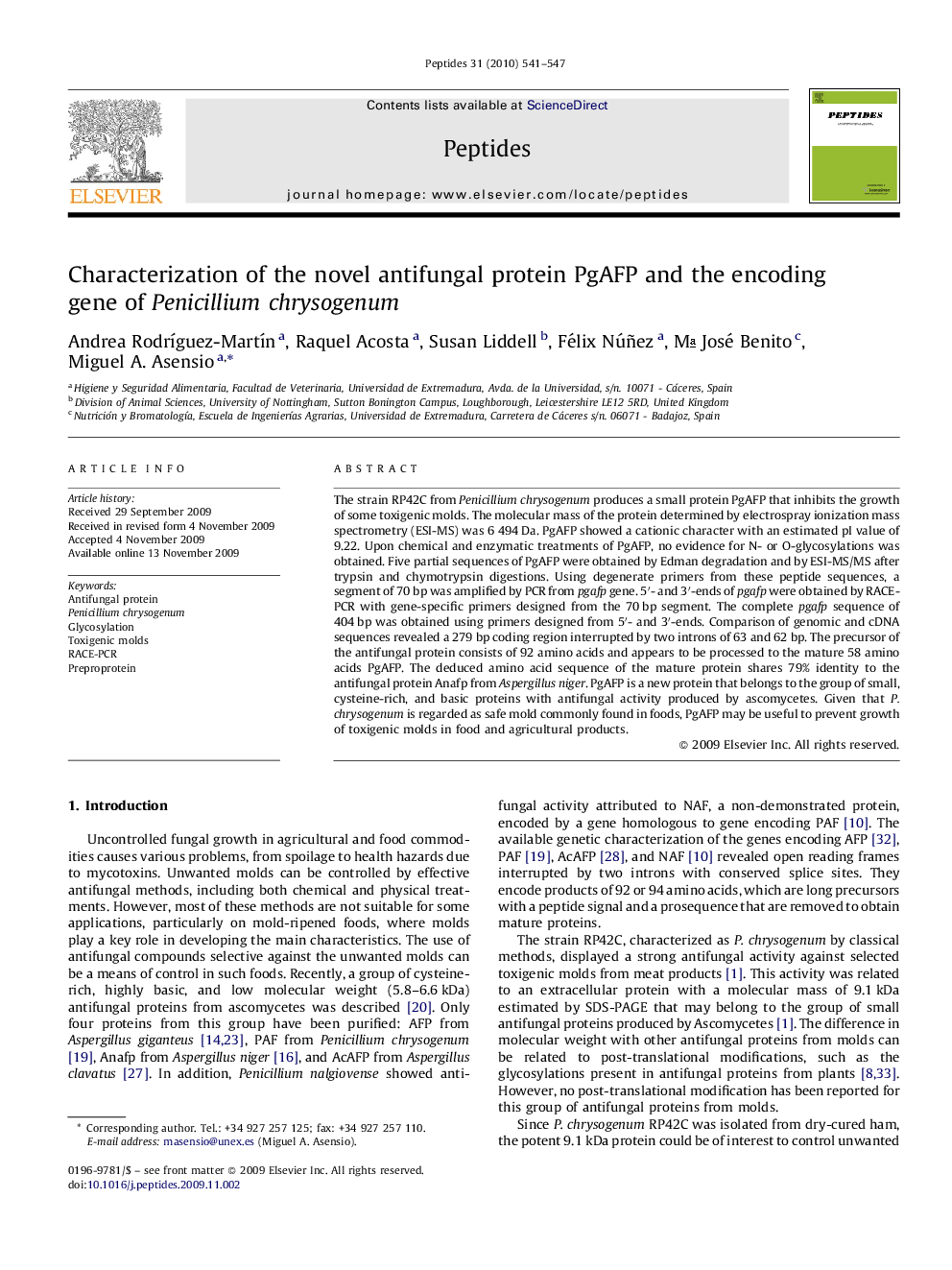| کد مقاله | کد نشریه | سال انتشار | مقاله انگلیسی | نسخه تمام متن |
|---|---|---|---|---|
| 2006875 | 1066357 | 2010 | 7 صفحه PDF | دانلود رایگان |

The strain RP42C from Penicillium chrysogenum produces a small protein PgAFP that inhibits the growth of some toxigenic molds. The molecular mass of the protein determined by electrospray ionization mass spectrometry (ESI-MS) was 6 494 Da. PgAFP showed a cationic character with an estimated pI value of 9.22. Upon chemical and enzymatic treatments of PgAFP, no evidence for N- or O-glycosylations was obtained. Five partial sequences of PgAFP were obtained by Edman degradation and by ESI-MS/MS after trypsin and chymotrypsin digestions. Using degenerate primers from these peptide sequences, a segment of 70 bp was amplified by PCR from pgafp gene. 5′- and 3′-ends of pgafp were obtained by RACE-PCR with gene-specific primers designed from the 70 bp segment. The complete pgafp sequence of 404 bp was obtained using primers designed from 5′- and 3′-ends. Comparison of genomic and cDNA sequences revealed a 279 bp coding region interrupted by two introns of 63 and 62 bp. The precursor of the antifungal protein consists of 92 amino acids and appears to be processed to the mature 58 amino acids PgAFP. The deduced amino acid sequence of the mature protein shares 79% identity to the antifungal protein Anafp from Aspergillus niger. PgAFP is a new protein that belongs to the group of small, cysteine-rich, and basic proteins with antifungal activity produced by ascomycetes. Given that P. chrysogenum is regarded as safe mold commonly found in foods, PgAFP may be useful to prevent growth of toxigenic molds in food and agricultural products.
Journal: Peptides - Volume 31, Issue 4, April 2010, Pages 541–547